Welcome to the second issue of Baked w/ Nick! I'm thrilled to have more people here this week, and hopefully I can keep saying that every week!
If you haven't already, follow @BakedwNick on Instagram for a more in-depth look at how I bake everything I write about and more. This week we are baking corn cookies that are corn-ificant and talking about cookbooks everyone should read to get better at cooking.
Let's bake:
Do you like cookies? How about corn? Okay hear me out…
When I read Christina Tosi's Milk Bar cookbook, the first recipe I bookmarked was this corn cookie.
I don't eat a lot of corn, despite coming from Children of the Corn country but the idea of a salty-sweet cookie that was both buttery and corn-tastic sounded interesting.
It also sounded like something my mother would love. I have many memories shucking ears of corn on the front porch as a kid, and she introduced me to cornbread — one of my favorite things now.
Tosi herself says in her book that this was a recipe that she didn't let out of her house for many years, only sharing with a strawberry farmer who was sworn to secrecy and kept it in a lockbox under his sink.
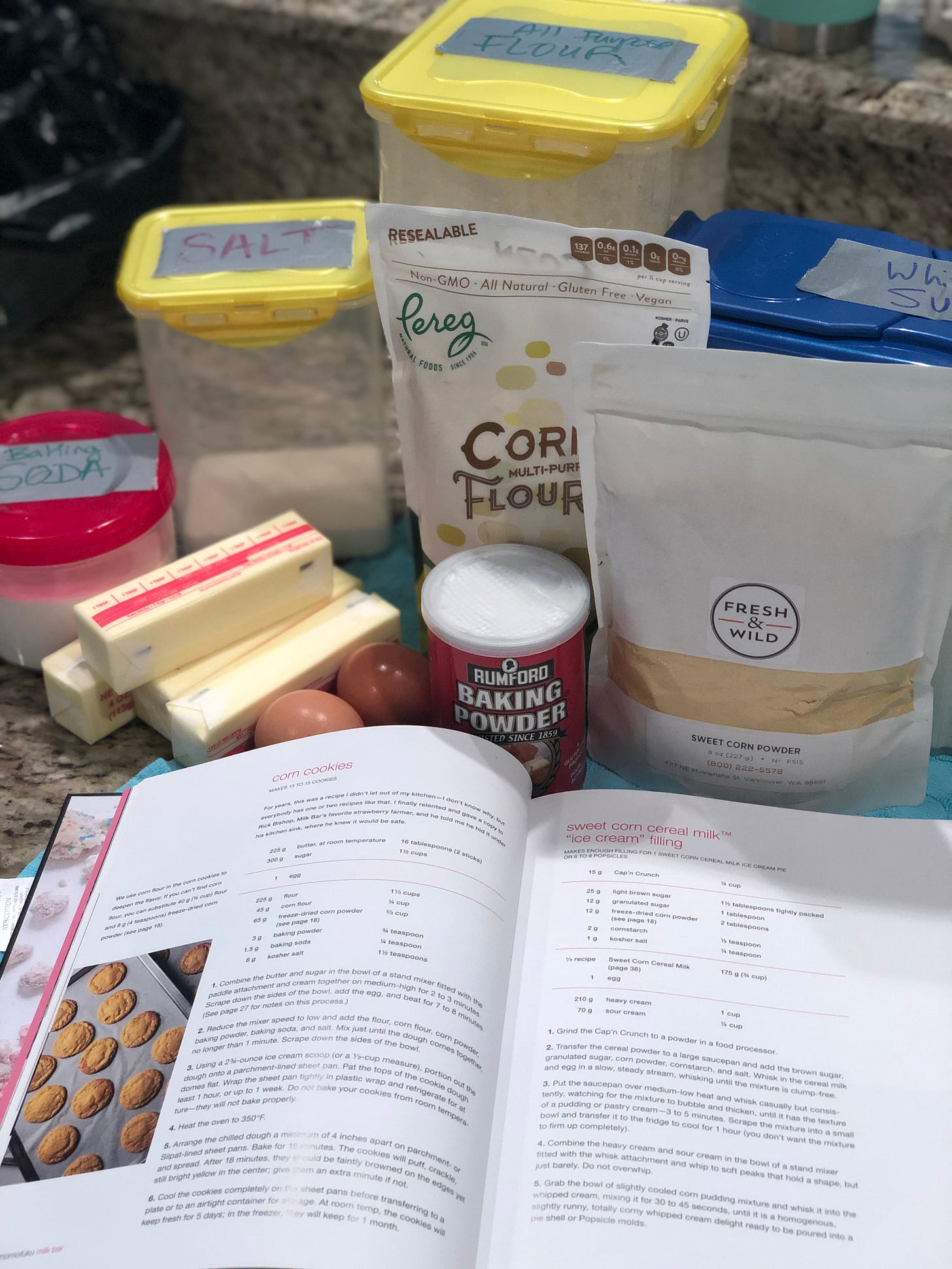
Like last week, I doubled the recipe, and it's the only way to go. Whatever you don't bake-off, you can keep in your fridge for five days and in your freezer for up to a month. But honestly, I don't think these will last that long.
Ingredients
4 sticks of butter
3 cups of sugar
2 eggs
2 2/3 cups of flour
1/2 cup of corn flour
1 1/3 cups of freeze-dried corn
1 1/2 teaspoons of baking powder
1/2 teaspoon of baking soda
3 teaspoons of salt
Creaming the butter
Okay, so I will fully admit that I am learning alongside anyone else that decides to bake with me, and I am new to this. Most of my knowledge and experience comes from just being a lover of cooking shows and cookbooks my entire life.
But my inexperience has taught me one thing that I can pass onto you: If you want to cream your butter correctly, it *needs* to be at room temperature.
Both weeks of making cookies, I started too soon and spent an exuberant amount of time in the creaming process. In the end, it's not the end of the world, but it will require patience if you start with your butter too cold.
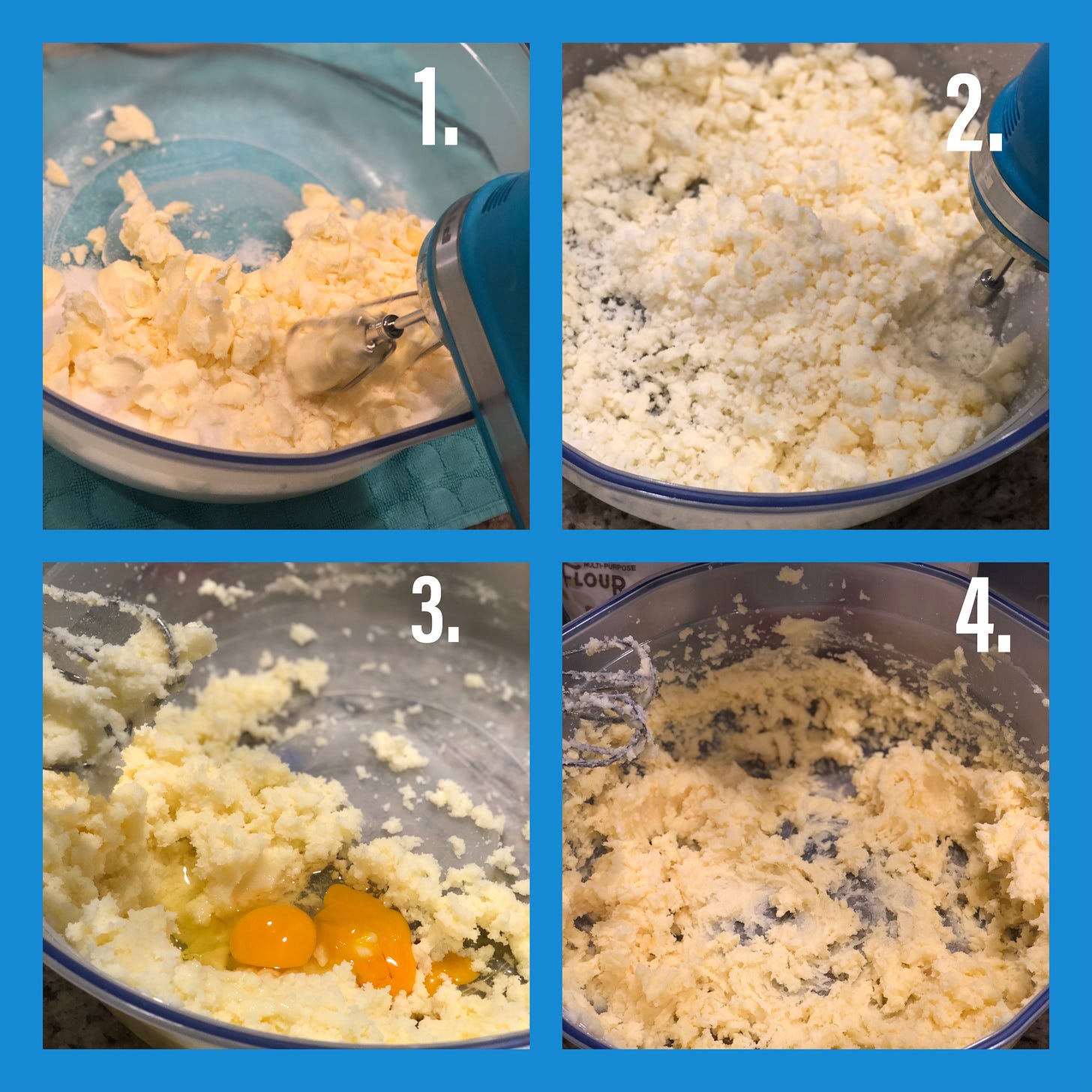
Remember, you will be done when the mixture resembles wet sand. It should take about 2-3 minutes to get your butter and sugar incorporated to the point where you add the egg.
Tosi says to add them one at a time as you mix, but as I am typing this, I realize I added them all at once, so I'll say it's fine as long as you are patient and thoroughly cream it together.
Once you add the eggs, it should take about 6-7 minutes to get it from white to slightly yellow with the eggs fully incorporated.
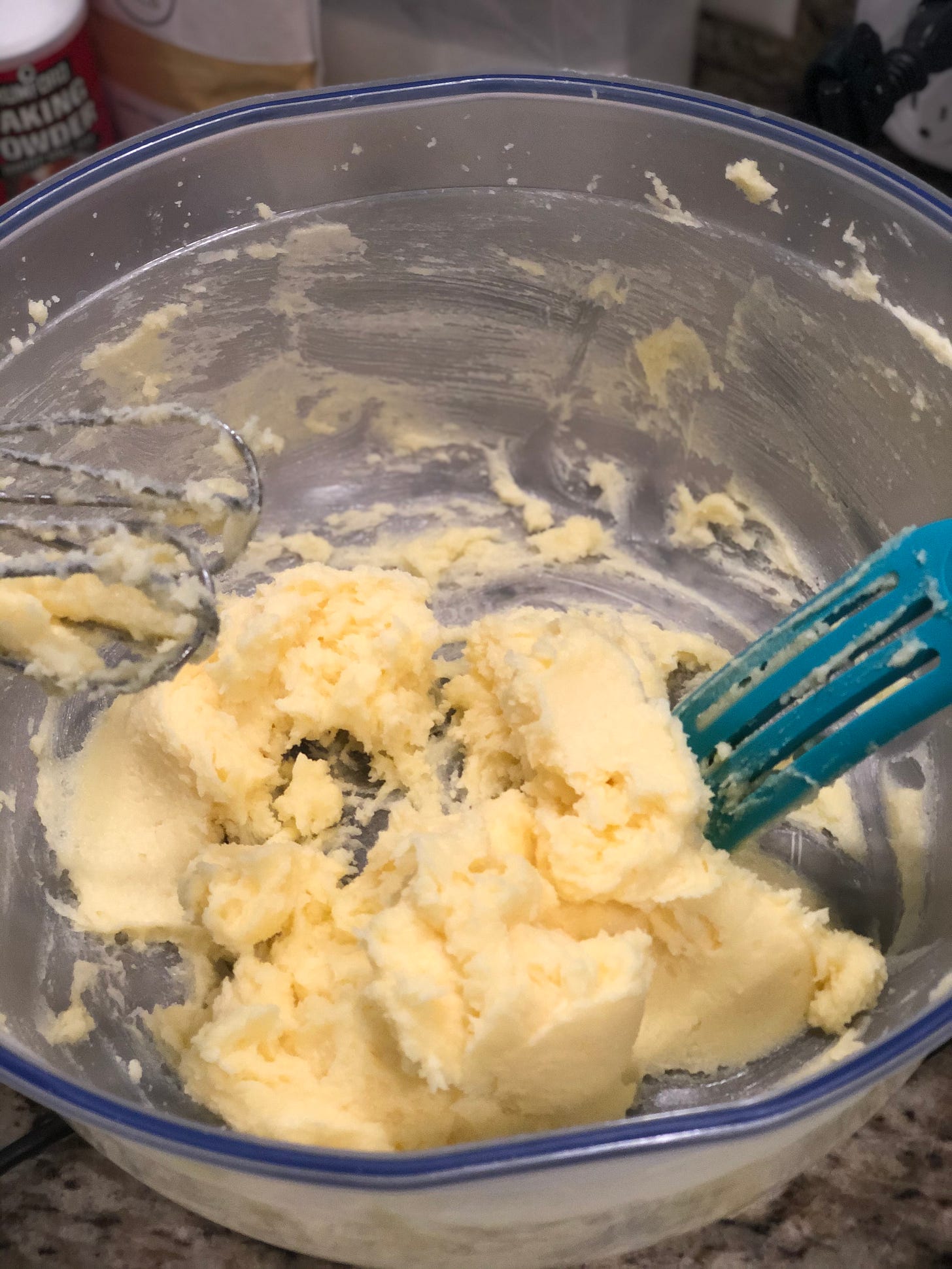
Adding the fun stuff
Last week, the fun stuff was potato chips, pretzels, and butterscotch morsels so, by comparison, this week's is a little more tame but no less delicious.
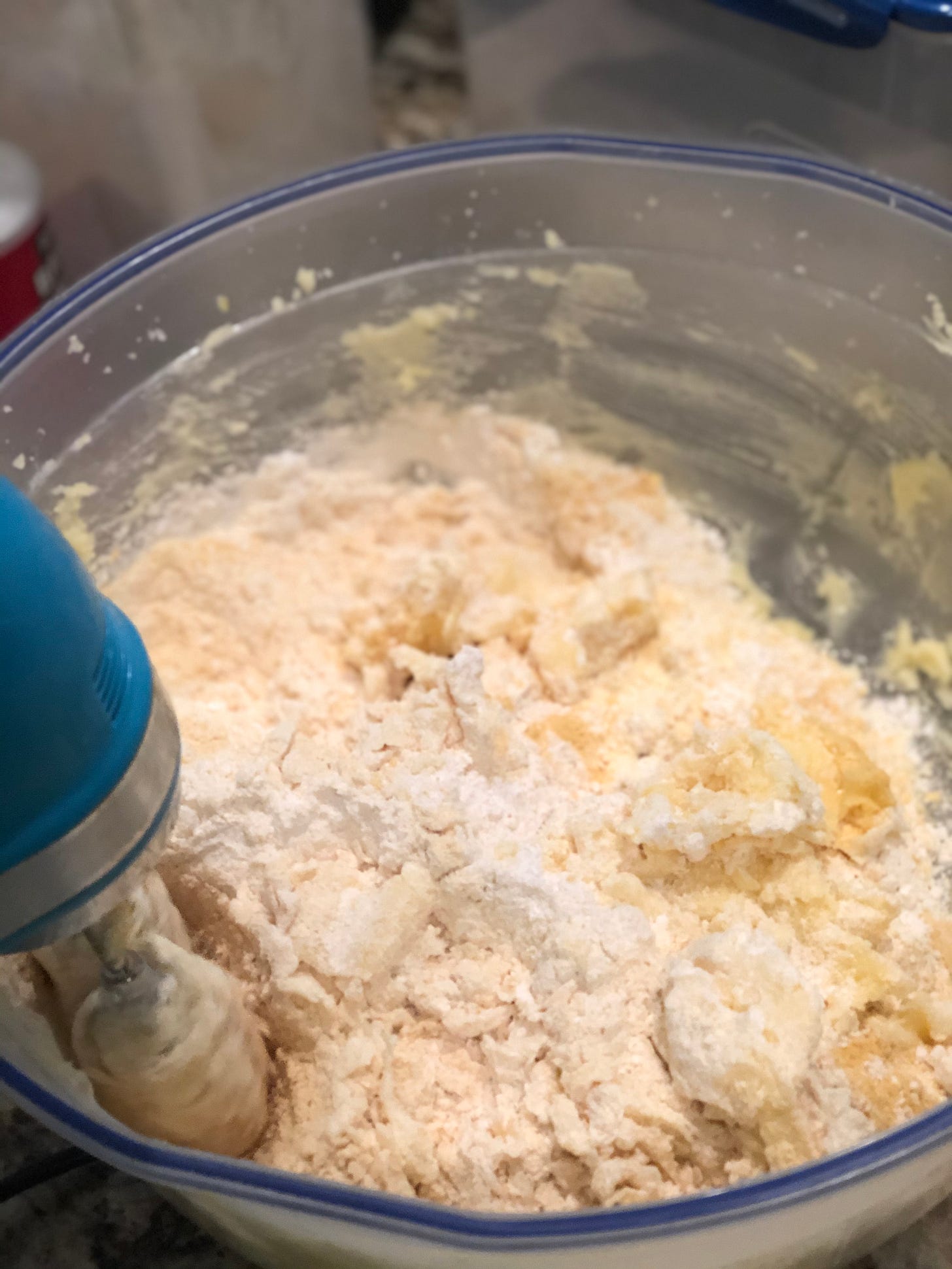
The secret to this cookie is the freeze-dried corn powder and cornflour — both offer their own unique aspect of corniness, like having a parent that is also a gym teacher.
The only thing I would change about this recipe is I'd dial back the salt a little bit. The recipe provided does not reflect that, so if you are wary of salty flavors, you might want to adjust it juuuuuust a touch. If you can't find corn flour, you can substitute with 1/4 cup of flour and 1/4 cup of freeze-dried corn instead, according to the recipe.
Be careful, don't over mix the batter. You want to incorporate it fully, not beat it to death. When you stop seeing flour on the sides and bottom of the bowl and fully mixed into the batter, you are done. This should take a minute or two max.
Chilling and shaping
Much like last week, the chilling is the most important step in this process.
The book stresses that you need to chill this batter if you want the cookie to turn out properly and have the right texture. I let it chill for three or four hours and then baked off the entire batch of batter.
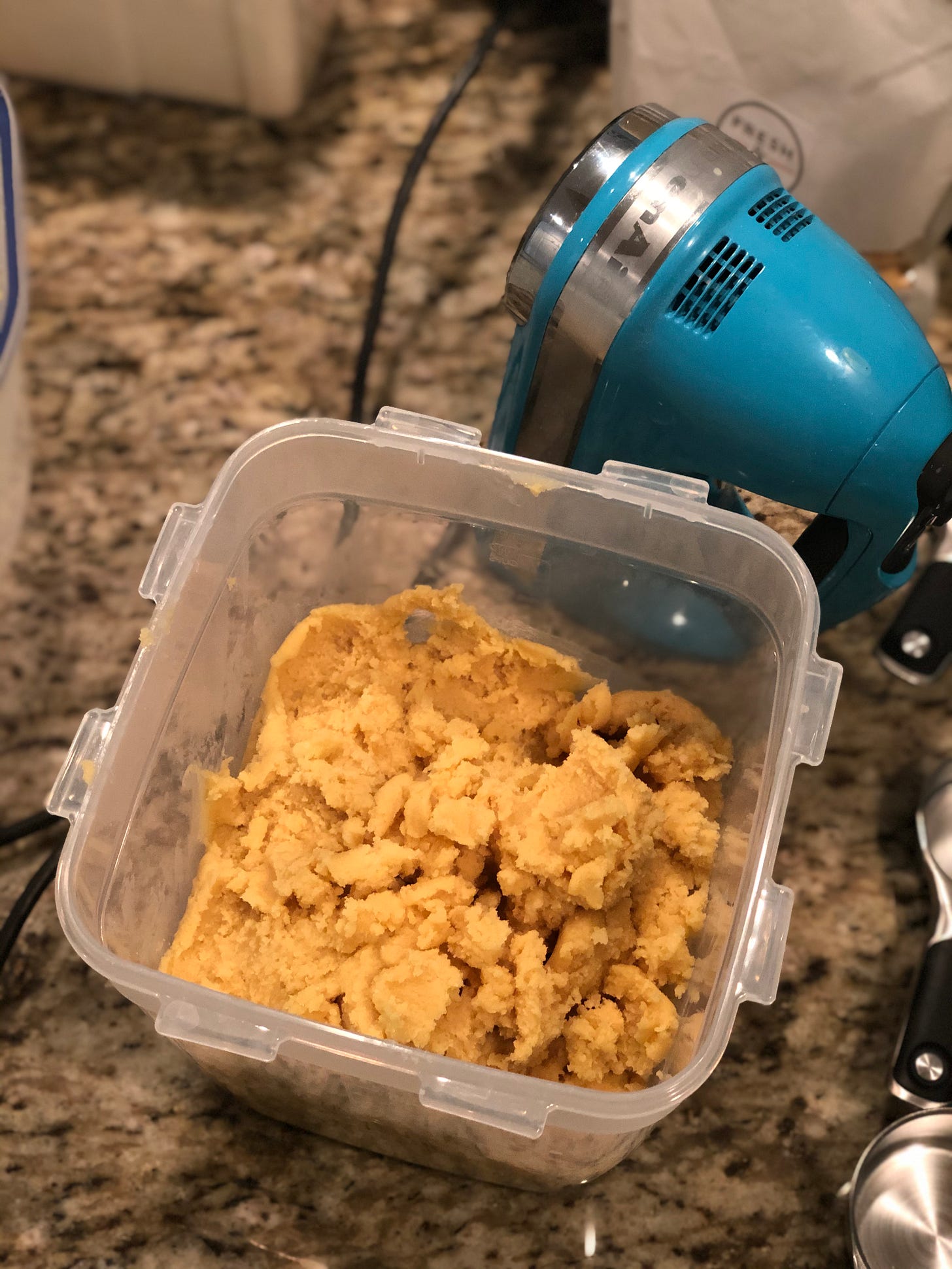
I didn't bother with the ⅓ cup scoop like last time and decided to eyeball it with two spoons. It turned out great! I highly recommend it if you don't have an ice cream scoop (something I plan to invest in because why not? I'll use it for ice cream too).
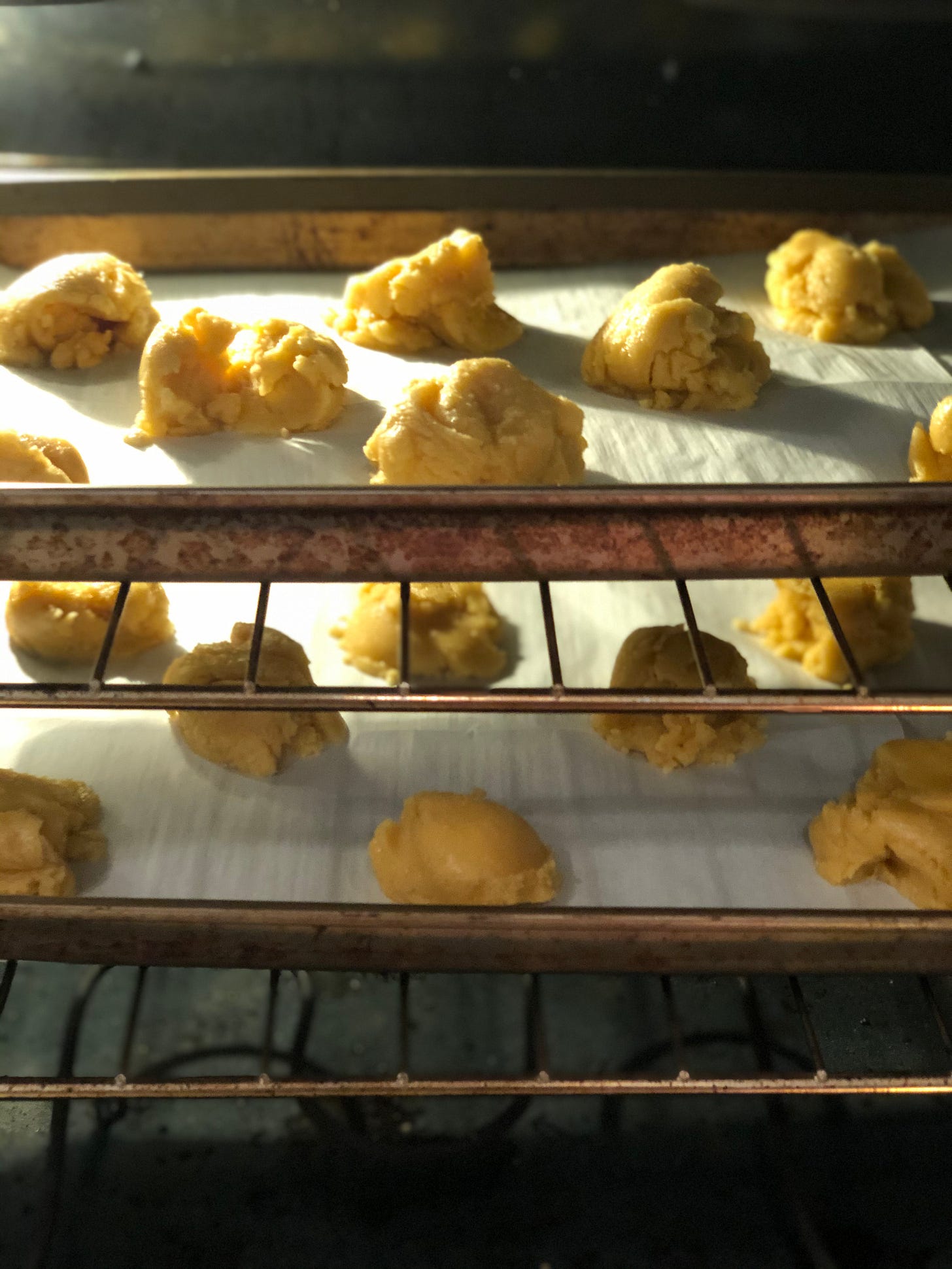
Baking
Space these out about 2-3 inches apart on a baking sheet lined with parchment paper and baking in a preheated oven set to 350 degrees. I like to swap my sheets halfway through baking because my oven sucks so that you can do the same.
I set the first timer for 10 minutes, made my swap, then waited another 5-7 minutes until they were golden brown on the edges and yellow in the middle. Let them cool completely on the baking sheet before removing and putting on a plate or in a LocknLock (send the check, I am ready for endorsements LocknLock).
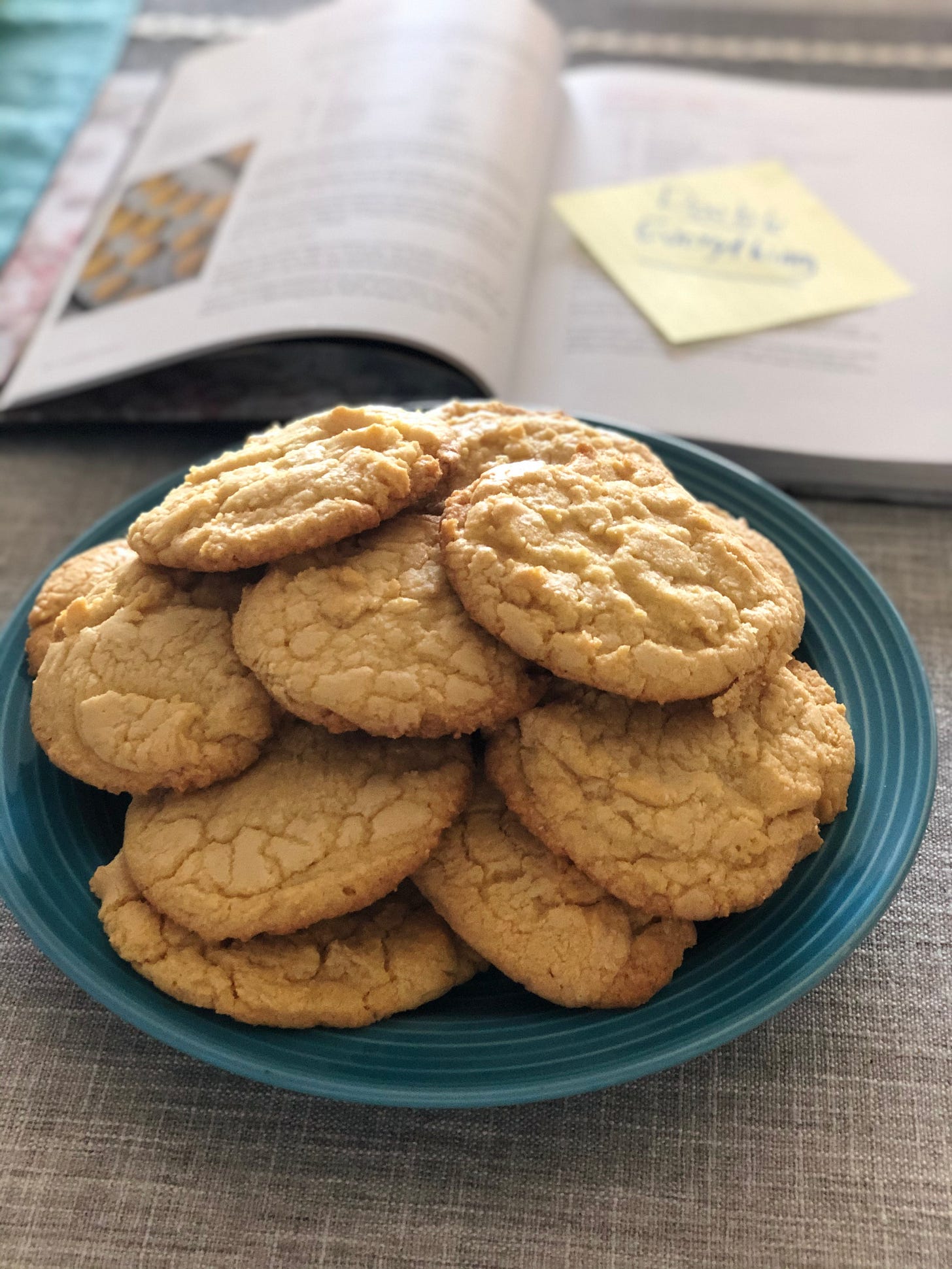
I took these to the office, and they went over well. I think some people initially were a little thrown by me, calling it a corn cookie, but those who had faith and tasted said they really like it. These lasted a little longer in the break room compared to the compost cookie, but still didn't make it past 10 am.
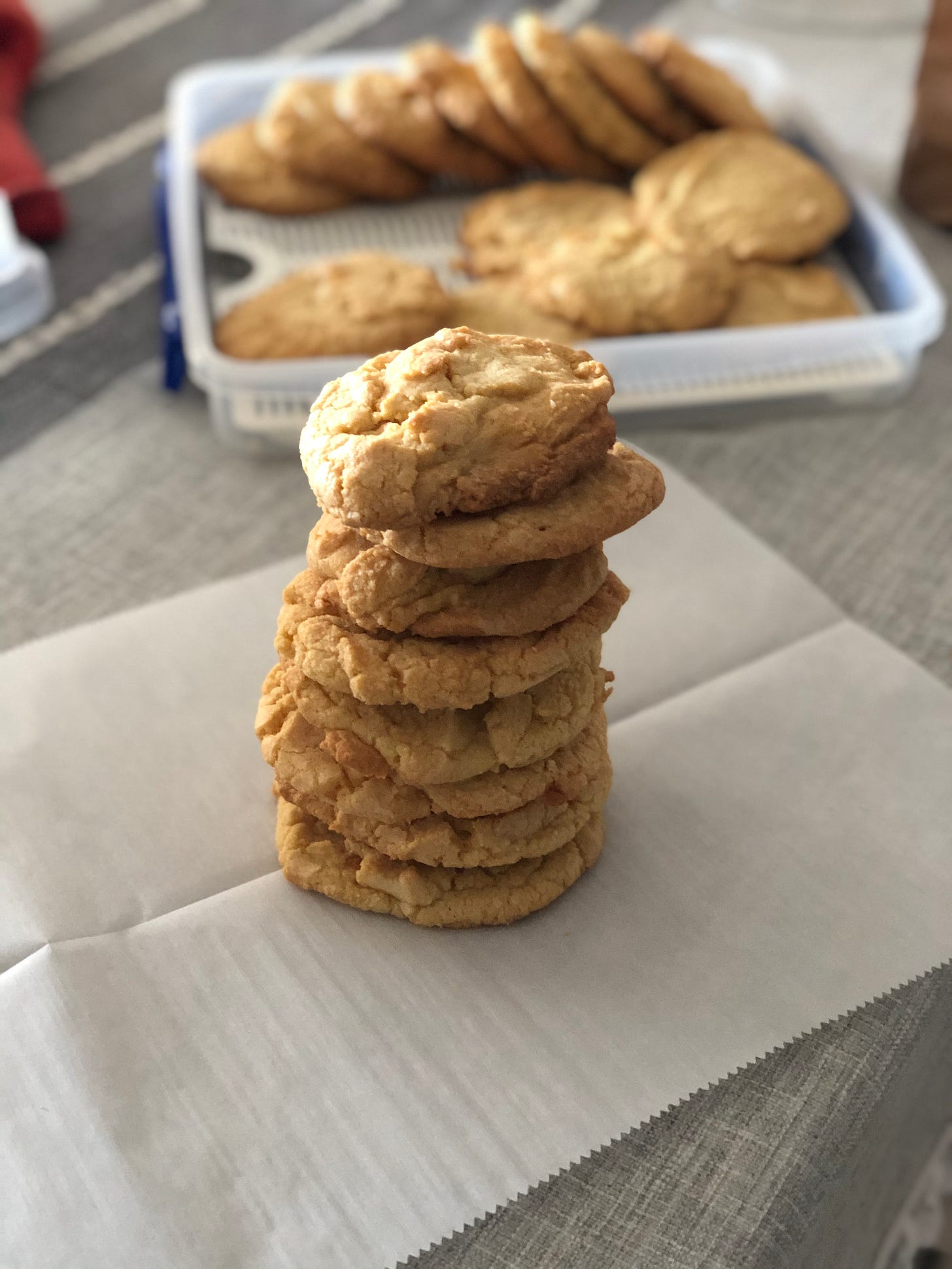
Both my mother and a coworker said they'd be the perfect thanksgiving cookie, I think they go well in the morning with a cup of coffee or tea, and I am sure the Milk Bar cookbook intends for you to make these into ice cream sandwiches (I am 100 percent doing this next time).
I would 10/10 recommend baking these, they are super easy to make, have an incredible depth of flavor, and if you remember to keep your butter softened, it goes even faster.
Everyone should read more cookbooks
I was so fortunate to grow up in a household that not only had a lot of cookbooks but treasured them.
My mother has an extensive collection of cookbooks that date back to long before I was born and include some of the classics, like the Art of Cooking, practically every Barefoot Contessa book, and the most extensive collection of Susan Branch books I've seen to this day.
I have her to thank for my love of food and everything that surrounds it. Between reading her diverse collection of cookbooks and watching Food Network with her every weekend for as long as I could remember, it isn't a surprise I have started a food-related newsletter.
Her collection is currently in storage, but in its place, I have started my own that I plan to grow and hopefully let the next generation enjoy as I did. I've mentioned Christina Tosi Milk Bar cookbook several times already, but I wanted to recommend two cookbooks that everyone should read to get better at cooking.
Salt, Fat, Acid, Heat by Samin Nosrat
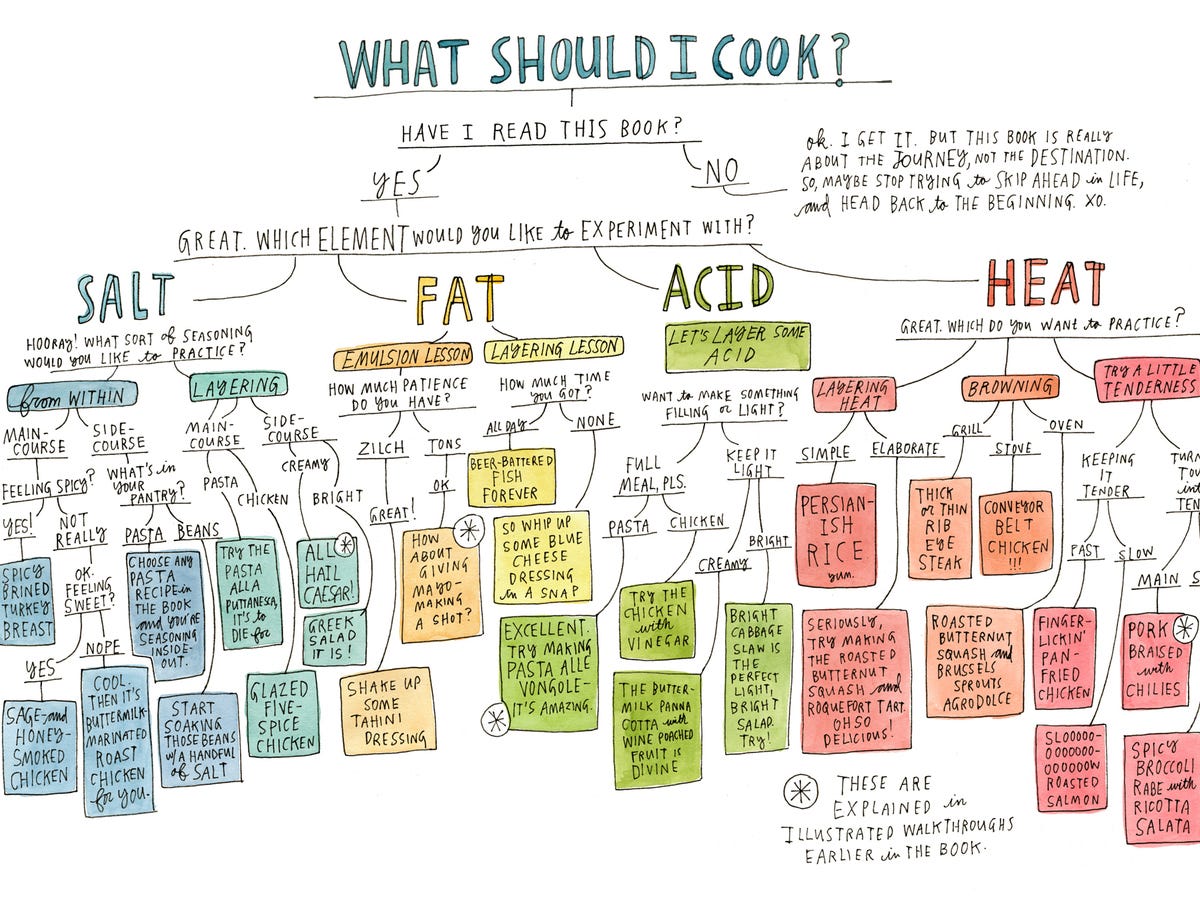
Yeah, you could watch the Netflix documentary series of the same name (and you should; it's fantastic, and watching how Samin interacts with food and people will fill you with so much joy), but the book is easily the best resource for any cook of any level.
It isn't a cookbook like a Barefoot Contessa book, full of recipes and a few techniques. Instead, it's like a cooking bible that you can refer back to time and time again but repeatedly come away with a deeper meaning.
The book was born after Samin taught her former journalism professor how to cook, and he suggested she put pen to paper. The result was a James Beard award-winning book with everything a beginner needs and all the tips anyone of any level could want to improve their cooking.
It centers around what Samin calls the four elements of cooking. You need to have a balance of salt, fat, and acid while also applying the correct heat to unlock the flavor of what you are cooking.
Honestly, it works. I was able to apply what I learned from the Fat chapter to better understand the creaming process of making cookie batter. Both of my batters have turned out pretty close to perfect, and I think a large part is due to this book. And if that doesn't do it for you, the illustrations are whimsical and look like the sort of prints I'd want to hang in a kitchen.
Samin also narrates the audiobook, and given the nature of the book, it really works that way too, so I highly recommend it.
The Food Lab by J. Kenji Lopez-Alt
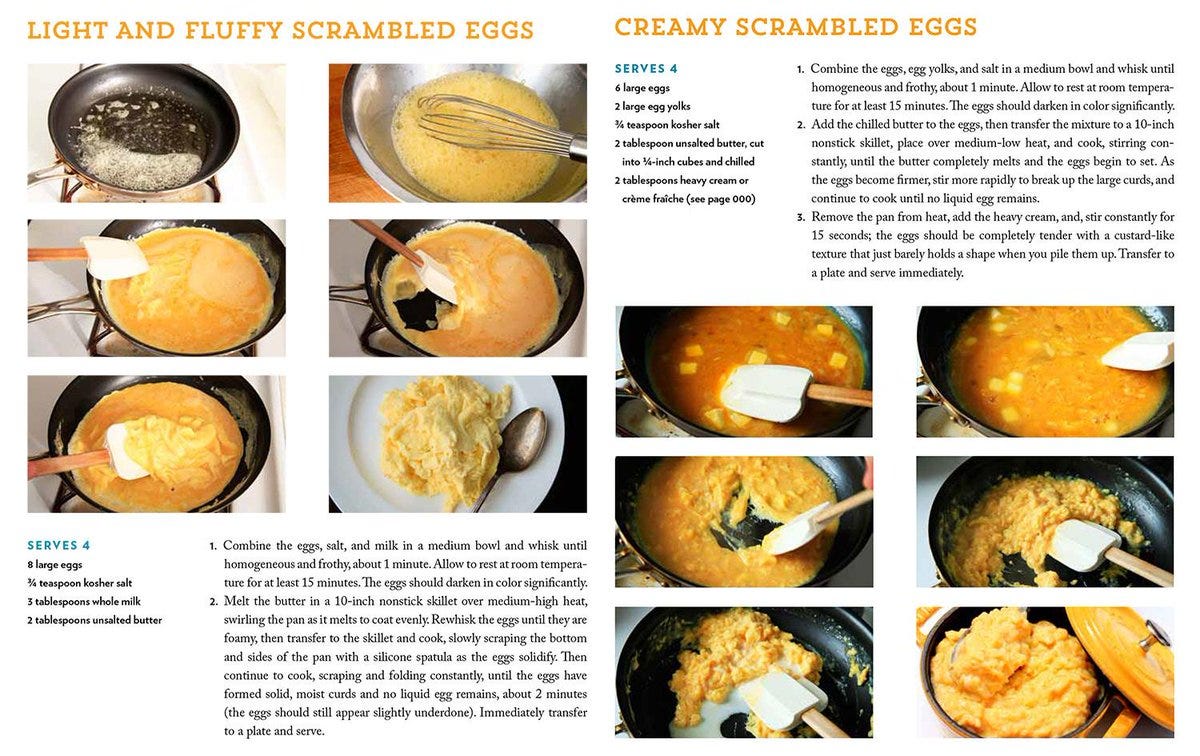
To call J. Kenji Lopez-Alt a pioneer would be an understatement. He helped popularize a more scientific approach to cooking rooted in experimentation to find the best method to cook something.
This book isn't filled with hard to grasp or complex methods. Instead, it teaches you how to apply scientific thinking to help you understand how food cooks and why it needs to be handled a certain way to unlock its full potential.
Much like Salt, Fat, Acid, Heat — this book also was a James Beard award winner and is regarded as a fundamental building block of learning how to cook. Unlike Salt, Fat, Acid, Heat — the book is a little dense and, honestly, takes a long time to get through.
But it's more than worth what you get out. When you're done reading, you feel like you've just got your Ph.D. in cooking and can't wait to try out your knowledge.
That's all I have for you this week! The next newsletter should be a special one, I am attempting something pretty out there, and I can't wait to write about it! Stay up to date on all the bakes by subscribing to Baked w/ Nick to get it sent directly to your inbox every week and following @BakedwNick on Instagram.




